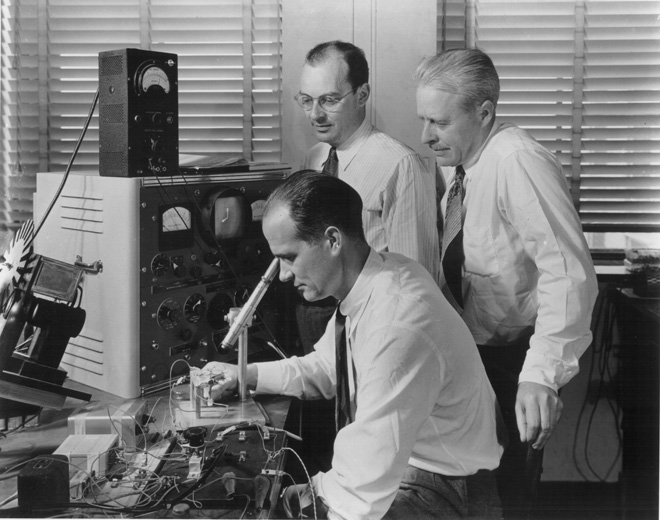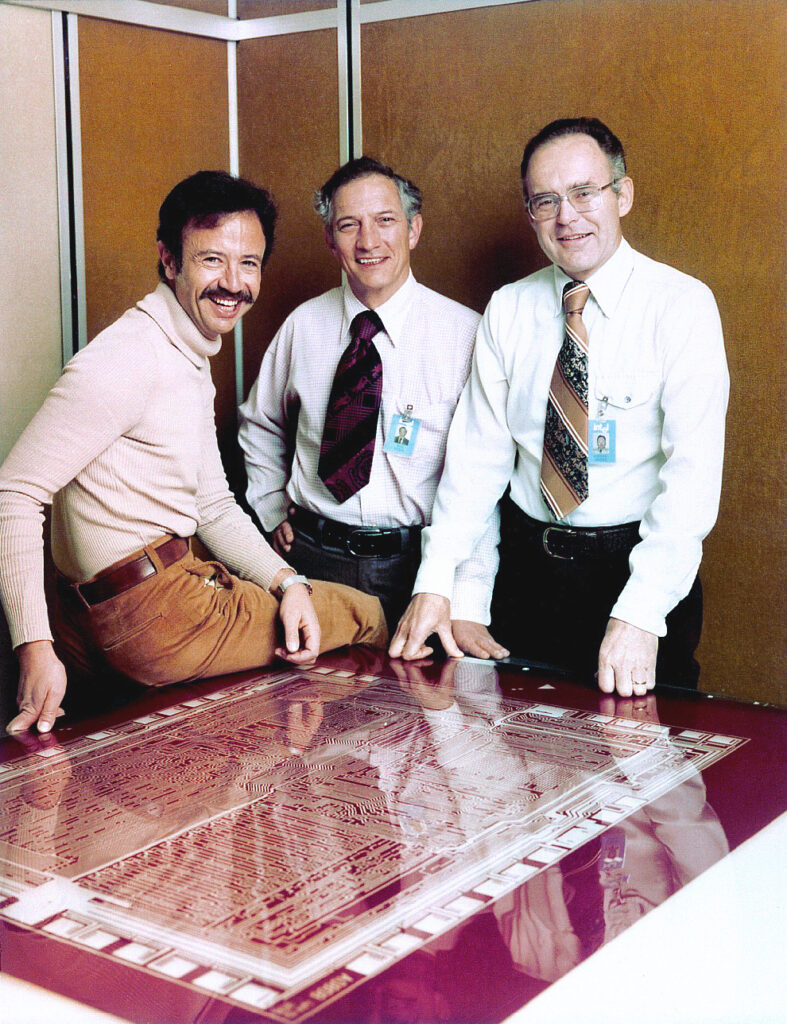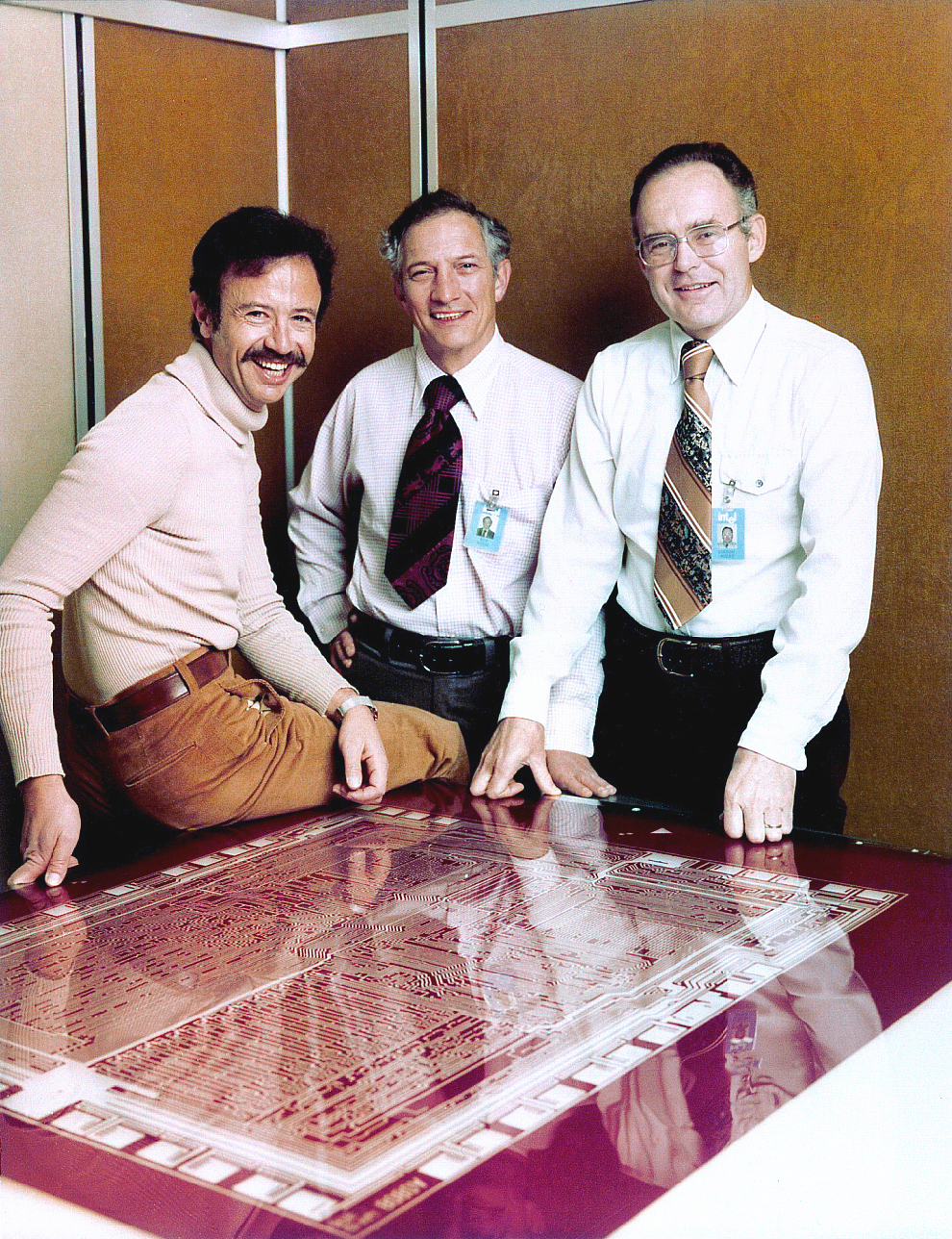Introduction:
The semiconductor industry stands as one of the most pivotal and transformative sectors in modern history, revolutionizing technology and shaping the world as we know it today. Behind every milestone and breakthrough, there are visionaries and legends whose contributions have been instrumental in driving the Semiconductor industry forward.
In this blog post, we’ll delve into the lives and legacies of 8 legends who have left an indelible mark on the semiconductor landscape over the past century.
Follow us on Linkedin for everything around Semiconductors & AI
8 Legends Who Shaped the Semiconductor Industry in the Last 100 Years
1. William Shockley, John Bardeen, and Walter Brattain – The Transistor Pioneers:
In the years leading up to their collaboration at Bell Labs in the late 1940s, the electronics industry relied heavily on cumbersome and unreliable vacuum tube technology for amplifying and controlling electrical signals. However, these vacuum tubes were bulky, consumed a significant amount of power, and were prone to failures and inefficiencies. There was a pressing need for a more efficient and compact alternative.
Enter William Shockley, a physicist with a keen interest in solid-state physics, who had already made significant contributions to the understanding of semiconductor materials. Alongside Shockley were John Bardeen, a theoretical physicist known for his work in quantum mechanics, and Walter Brattain, an experimental physicist with expertise in solid-state physics and semiconductor devices.

The Transistor Trio
The trio’s collaboration at Bell Labs culminated in the invention of the transistor on December 16, 1947. The transistor, a tiny semiconductor device capable of amplifying and switching electronic signals, represented a revolutionary departure from vacuum tube technology. Unlike vacuum tubes, transistors were small, lightweight, and reliable, offering significant improvements in performance, efficiency, and durability.
Read More: Who invented Transistor, Really??
Point-Contact Transistor became a legend of semiconductor Industry
The key breakthrough came with the development of the point-contact transistor, a device consisting of a small piece of germanium with two closely spaced metal contacts. By applying a small voltage to one of the contacts, Shockley, Bardeen, and Brattain discovered that they could control the flow of electrical current through the germanium crystal, effectively amplifying and modulating electronic signals with unprecedented precision.
The invention of the transistor sparked a technological revolution that reverberated across industries. This ranged from telecommunications and computing to consumer electronics and aerospace. Transistors replaced vacuum tubes, making electronic devices smaller, faster, and more reliable. They became essential in portable radios, televisions, computers, and satellite communication, driving the digital age forward.
William Shockley, John Bardeen, and Walter Brattain were jointly awarded the Nobel Prize in Physics in 1956.
2. Jack Kilby – The Father of the Integrated Circuit:
At the time of Kilby’s innovation, electronic devices were constructed using discrete components such as transistors, resistors, and capacitors, which were individually soldered onto circuit boards. This approach was not only labor-intensive and time-consuming but also limited the complexity and functionality of electronic systems. This was due to the physical constraints of connecting numerous components.
Kilby, who was working at Texas Instruments at the time, recognized the potential for integrating multiple electronic components onto a single semiconductor substrate to streamline the manufacturing process and reduce the size, weight, and cost of electronic devices. In July 1958, he successfully demonstrated the world’s first working integrated circuit, or IC. This consisted of a single piece of germanium with interconnected components etched directly onto its surface.

Unlike traditional circuit designs that relied on discrete components wired together on a circuit board, Kilby’s integrated circuit combined multiple electronic functions, such as amplification, switching, and signal processing, onto a single chip of semiconductor material. This breakthrough eliminated the need for bulky and unreliable interconnections between individual components. This paved the way for the miniaturization and mass production of electronic devices.
Integrated Circuit
Kilby’s integrated circuit was a game-changer for the electronics industry on multiple fronts. Firstly, it enabled significant reductions in size, weight, and power consumption, making electronic devices more portable, versatile, and energy-efficient. Secondly, it simplified the manufacturing process by consolidating multiple components onto a single chip, thereby reducing production costs and improving reliability. Thirdly, it opened up new possibilities for designing complex electronic systems with unprecedented levels of functionality and performance.
Following his groundbreaking demonstration, Kilby’s integrated circuit technology quickly gained traction. This paved the way for modern microprocessors, memory chips, and other semiconductor devices crucial to today’s digital infrastructure. Jack Kilby’s pioneering contributions earned him the Nobel Prize in Physics in 2000, solidifying his status as a highly influential figure in technology history.
3. Robert Noyce – Semiconductor Industry Legends
In 1959, while working at Fairchild Semiconductor, Noyce made a groundbreaking breakthrough with the invention of the monolithic integrated circuit, commonly known as the microchip. Building upon Jack Kilby’s earlier work on integrated circuits, Noyce developed a new method for fabricating semiconductor devices by diffusing individual components onto a single silicon wafer. This monolithic approach eliminated the need for laborious wire bonding and assembly processes, streamlining production and reducing costs significantly.

Noyce’s invention of the microchip revolutionized the way electronic circuits were designed and manufactured. Noyce’s monolithic integrated circuits combined various electronic components onto one semiconductor substrate, revolutionizing miniaturization, reliability, and performance in electronics. This breakthrough paved the way for modern microprocessors, memory chips, and other semiconductor devices driving today’s digital revolution.
Read more: How Gordon Moore Built the Most Important Company on the face of earth
4. Gordon Moore – Semiconductor Industry Legends
In 1965, Gordon Moore made a prescient observation in an article for Electronics Magazine. He noted that the number of transistors that could be placed on a semiconductor chip was doubling approximately every two years. This is when cost of manufacturing these chips was halving over the same period. This observation, later dubbed Moore’s Law, outlined a trajectory of exponential growth in the density and performance of integrated circuits.
Moore’s Law provided a roadmap for the semiconductor industry, offering a glimpse into the future of computing and signaling a relentless march towards ever smaller, faster, and more powerful electronic devices.
One of the key drivers of Moore’s Law has been the relentless pursuit of miniaturization through advances in semiconductor lithography and manufacturing processes. As transistors and other electronic components have shrunk in size, the density of integrated circuits has increased exponentially. This has led to dramatic improvements in computing power, energy efficiency, and cost-effectiveness.
5. George Boole – The Father of Boolean Algebra:
One of Boole’s most significant contributions was his formulation of Boolean algebra, a branch of mathematics that deals with logical operations and relationships. In his seminal work, “The Laws of Thought,” published in 1854, Boole laid out the principles of Boolean algebra. He demonstrated its applicability to a wide range of logical problems. He showed how logical expressions could be manipulated and simplified using algebraic techniques, paving the way for the systematic analysis and design of digital circuits.
Boole’s ideas found practical application in the emerging field of digital electronics, particularly in the design of electronic switching circuits. Engineers quickly realized that Boolean algebra provided a powerful tool for designing and analyzing digital logic circuits. This enabled them to create complex electronic systems based on binary logic. By representing logical functions as combinations of basic logic gates such as AND, OR, and NOT gates, engineers were able to design electronic circuits capable of performing a wide range of computational tasks.
Read more: 9 Waves of Innovation: A Deep Dive into the Semiconductor Industry’s Journey
6. Marcian “Ted” Hoff – Semiconductor Industry Legends
Marcian “Ted” Hoff’s pivotal role in the development of the Intel 4004, the first commercially available microprocessor, revolutionized the electronics industry. Hoff’s visionary insight into the potential of integrating multiple computing functions onto a single chip paved the way for the creation of personal computers, embedded systems, and countless other electronic devices.
The Intel 4004, launched in 1971, was a major milestone in computing history, showcasing the potential of microprocessor technology. Hoff’s work in microprocessor design has profoundly influenced modern society, reshaping how we live, work, and communicate in today’s digital era.
7. Morris Chang – The Founding Father of TSMC:
Morris Chang’s founding of Taiwan Semiconductor Manufacturing Company (TSMC) in 1987 marked a turning point in the semiconductor industry. As the world’s first dedicated semiconductor foundry, TSMC played a pioneering role in advancing semiconductor manufacturing technology and driving the industry’s globalization and specialization.
Under Chang’s leadership, TSMC became a leading provider of semiconductor manufacturing services. This has enabled fabless semiconductor companies to bring innovative products to market without the need for their own fabrication facilities.
Read more: How a Tiny Piece of Silicon Could Upend the World Order
8. Fujio Masuoka – The Inventor of Flash Memory:
Fujio Masuoka’s invention of flash memory in the 1980s revolutionized the way data is stored and accessed in electronic devices. Unlike traditional magnetic storage media, such as hard disk drives and floppy disks, flash memory offers fast access times, low power consumption, and non-volatile storage. This makes it ideal for use in portable devices such as USB drives, memory cards, and solid-state drives. Masuoka’s pioneering work laid the foundation for the development of NAND and NOR flash memory technologies. These have become essential components of modern electronics.
Read more: Who invented memory..Intel or Toshiba?
Conclusion:
The semiconductor industry owes much of its success and innovation to the visionaries and legends who have shaped its trajectory over the past century. From the invention of the transistor to the development of microprocessors, integrated circuits, and flash memory, these legends have transformed the way we live, work, and interact with technology.



